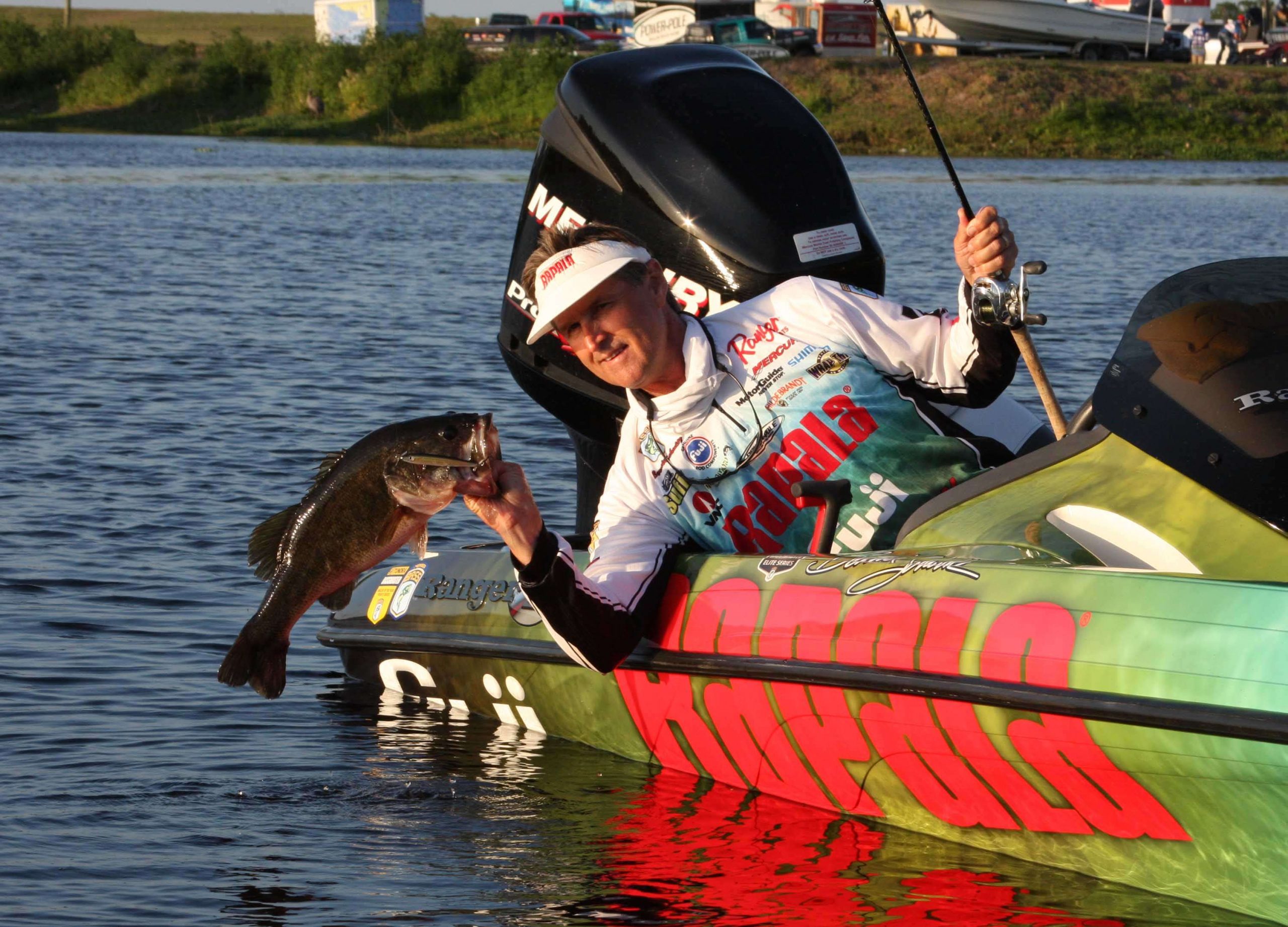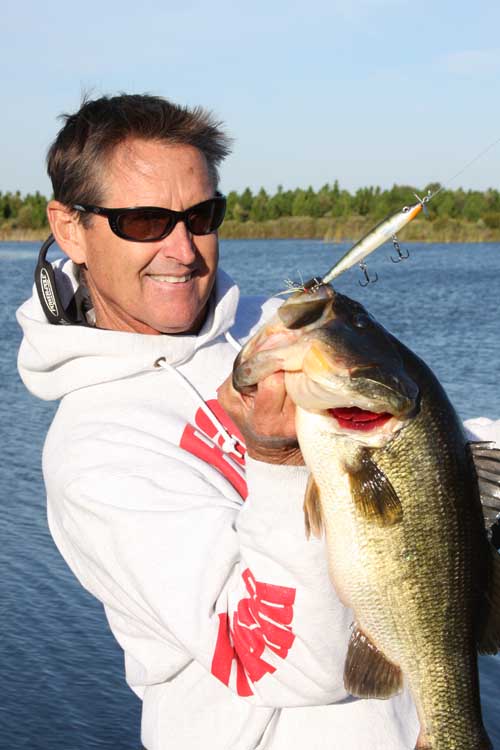
Anglers can boost their chances of enticing strikes by fishing hard baits with dressed-up rear trebles. Red hooks have earned their chops, but Bassmaster Elite Series pro Bernie Schultz knows that the eye-catching enhancement of feathered hooks can tempt bass that might otherwise lose interest at the last moment.
“It’s a teaser — a visual aid and another way to trigger a bite when a fish keys on a bait by sight,” said the Florida pro.
Favoring such tactics in clear water, Schultz said good visibility is necessary to maximize the feathers’ signature move — an action he calls “breathing.”
“When you pull the lure, the feathers become streamlined, and as soon as you pause they flare,” Schultz said. “Sometimes, that’s all it takes. Feathers deliver another level of action that can close the deal when a bare treble hook has no appeal.”
Equally important is the “hinging” effect that feathers facilitate. Essentially, a rear treble hook swings with or without adornment; but dress up that plug with a feathered hook and now the increased profile draws more attention to this aft motion. Similar in appearance to a jointed bait wiggling its badonkadonk, the feathered treble puts the eyes on the prize.
“The bait is also doing this with a bare treble, but the feather accentuates it so it’s more visible,” Schultz said. “Many anglers just look at the front end of their plug, but there’s a lot going on at the tail too.”
This belief guided Schultz as he helped developed some of Rapala’s feathered baits like the X-Rap series. Prior to this, he used to carry a box of VMC trebles that he dressed with feathers. For off-the-shelf plugs or those dressed with third-party hardware, Schultz advises anglers to remember that all feathered hooks are not created equally.
“I like two to three feathers per hook, and I like feathers with loosely spaced fibers,” he said. “Rigid feathers won’t have the right action. If you buy plugs with feathered hooks, look at the bait in the package. If the feathers are stiff, you’re not going to gain any benefit.”
Moreover, Schultz warns against overdoing it with the bass bling. In Florida, Texas and anywhere he feels he’s likely to find a real toad, he’ll often upsize his trebles from the OEM set. However, too much of a good thing can become a bad thing.
“Make sure the feather doesn’t dwarf the hook,” he said. “There’s a fine line where if you go with too many feathers, or too large, you can (impede) the action of the bait.”
 Schultz said his top scenarios for feathered hooks include:
Schultz said his top scenarios for feathered hooks include:
Schooling fish: Smallmouth and spotted bass are particularly attracted to vivid teasers, so he’ll often switch from his standard white feathers to chartreuse, orange or red. “I’ll experiment to see what color they like.”
Reluctant fish: Window shoppers are frustrating, but anglers that push a little harder for the sale can often find that trigger point. “If I’m getting a lot of followers and they won’t commit to the bait, my next move is to put a feathered treble on that bait. That adds one more thing to provoke them.”
Aggressive fish: When a bass is looking to fill its belly, a big meal makes a lot more sense than a bunch of little ones. “If I know the fish are looking to feed, I’m going to give them a bigger profile.”
Are feathered plugs always the right choice? Not necessarily. When conditions call for smaller profiles and more modest action, Schultz might replace a feathered hook with a bare treble to downsize his bait’s appearance. Aside from this, he’ll typically go with feathers — at least on his suspending and topwater baits — and adjust as needed.
“It’s kind of a gut feeling,” Schultz said. “It’s not cut and dried, so I carry both. I’ll start with a feathered treble, and then it’s just a process of elimination until I figure out what the fish want.”





